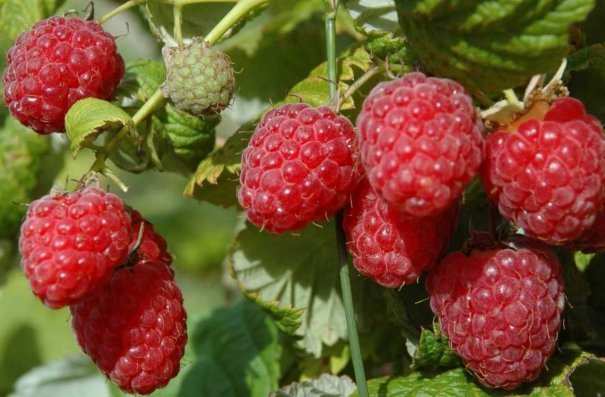Repair raspberry - one of the favorite berries of gardeners. Its advantages include ease of care, the ability to quickly form root shoots and the ability to harvest all season. In this article we will talk about the description of the variety of raspberry "Bryansk miracle", consider the advantages and disadvantages, as well as features of planting and care.
Table of contents
Description of the Bryansk Miracle Repair Raspberry
In 2001, the variety “Bryansk divo” was bred by the breeders Evdokimov S.N. and Kazakov I.V. after pollination of the inter-specific form 47-18-4.
Since this is a remontant raspberry, the fruits appear unevenly and ripen. Its fruits begin to ripen by the end of August, the berries are harvested until November. Up to 4 kg can be collected from a bush. Fruits are harvested every 1-2 days in the morning, when the dew dries or in the evening if there is no rain.
The berries are stored at 0 ° C in the refrigerator for about 5 days. The grade perfectly is suitable for cultivation in average regions of Russia.
Characteristics of bushes and berries
The height of the bush is 1.5-1.8 m, it is semi-sprawling and rather compact. The bush has 5-7 powerful branches and some thorns. The leaves are dark emerald in color with teeth on the edges.
Conic scarlet berries grow on the bush, they are up to 4 cm long. Their average weight is 5-6 g, but fruits weighing 11 g come across. Their taste is sweet, with a slight sourness. The fruits have: sugars 5.6%, organic acids - 2.2%, carotene - up to 0.3%, ascorbic acid - 44.6 mg%. The difference of this variety from others is that 2 fruit branches grow from each node of the shoot.
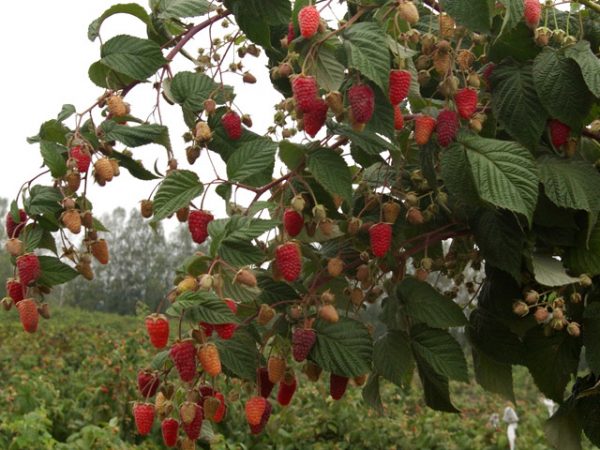
Merits
- The variety bears fruit for a long time and berries can be harvested in the first year after planting.
- High yielding.
- Berries are large.
- The variety has an average drought resistance and heat resistance.
- Raspberry is medium-resistant, withstands temperatures down to -20 ° C.
disadvantages
- Berries are difficult to transport because they can only be transported for 48 hours.
- There are thorns on the bush, so they pick berries in protective clothing.
Requirements for lighting and soil
Groundwater deposition should not exceed 1.5 m. Raspberries should not be planted after the nightshade and strawberries, as these plants have similar diseases.
Landing time
It is best to plant bushes in October or in early spring before swelling of the kidneys.
Landing:
- When planting in the fall, land is prepared in 30 days.. If you plan to plant bushes in the spring, then the soil can be prepared a fortnight before.Make grooves that have a depth and width of 0.5 m; when planting between seedlings, leave an indent of 1.7 m, and between the ditches, keep a distance of 1.5-2 m.
- At the bottom of the groove, add rotted manure or finished compost with a layer of 0.2 m, and another 30 g of superphosphate per bush.
- It is preferable to buy seedlings that 1 yearhaving developed rhizomes with a length of 15 cm. The thickness of the branches should be approximately 1 cm.
- Cut the seedlings so that the branches are 0.3 m long.
- Put the seedling in the groove, straighten the roots, sprinkle with earth. Pour the soil in such a way that the root neck is 3-5 cm above the ground level.
- Then pour bushes according to the norm: a bucket of water (10 l) per 1 m of groove.
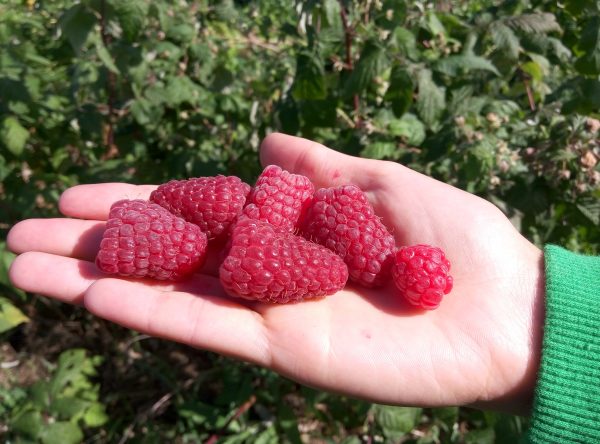
Care
- Crop. After planting, in the first year, raspberry stalks grow on which berries ripen. These shoots in the fall in October or November are removed. They are cut at a level of 3 cm from the surface. In April, pruned dry or frozen shoots.
- Watering. To understand whether you need to water the raspberries, dig a small lump of earth near the bush and squeeze it with your hands. If one does not crumble, then the humidity is 70% and the raspberry does not require watering, but if it disintegrates, then the raspberries need to be watered.Dig 2 grooves with a depth of 10 cm, departing 0.7 m from the row, pour water into them. On 1 m of a groove 4 buckets of water are required.
- Top dressing and loosening. In the spring they take 2 kg of manure per bucket of water. Feed the solution of mullein, pouring it into the grooves, which are 50 cm from the raspberry. On one bush use 5 liters of divorced mullein. At the end of June, they feed up the same solution. Also in the spring, a complex mineral fertilizer is applied - 100 g of nitroammofoski per 1 m2Even before the buds swell, the spring loosens the soil to a depth of 15 cm so that oxygen reaches the roots. Further, the loosening is repeated if weeds have grown or a stuck earth crust has appeared. Weeds are pulled out of the season and loosened 4-6 times.
- Garter to the trellis. Beat wooden sticks into the ground at the edges of the trench and tie wire between them in several rows in 40–50 cm. Then tie up the raspberries.
- Preparing for the winter. Since the variety is moderately resistant, it needs to be covered for the winter. To do this, ground the ground around the bushes with a straw or fallen leaves with a layer of 30 cm.
Breeding
Spikes
In the second year after the landing of the bushes of the “Bryansk miracle”, processes begin to grow next to them.When the processes are 15–20 cm high, they can be transplanted to a permanent place. This is done in the evening if it is cloudy.
First, dig in the grooves, observing a 1.5 m indent. In them sprinkled manure is poured. Then dig up shoots with roots. The processes are placed in the grooves and the roots are covered with earth. After watered and mulch.
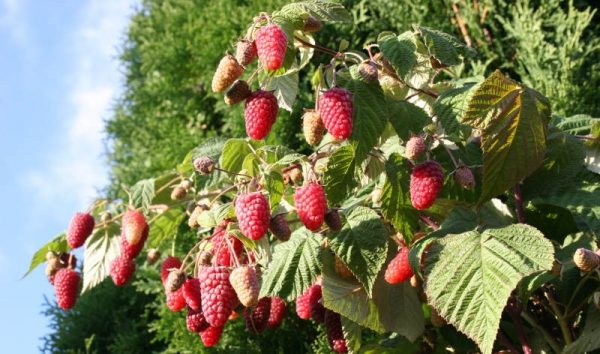
Cuttings
This is done in September. A branch is cut from a raspberry, it is cut into pieces of 7-10 cm. Next, the cuttings are placed for 6 hours in the Kornevin biostimulator solution. In the greenhouse make the substrate of sand and peat land. Then the cuttings are buried in the ground at an angle of 45 °. Cuttings, when they grow roots, transplanted to a permanent place.
You may also be interested in the following articles about raspberries:
Root cuttings
In the autumn, after picking the berries, a 1 cm thick root is cut off the uterine bush. Next, the root is cut into cuttings of 15 cm each. In the winter they are placed in boxes with dry sand and carried to the cellar. In the spring they are placed for 6 hours in the solution "Kornevina"and then put in the grooves horizontally and sprinkled with earth.
Seeds
- Squeeze juice from fruits.
- The pulp is ground, water is poured into it at room temperature and mixed.
- Next, choose the seeds that float on top.
- Seeds are washed, dried, poured into a container and slightly sprinkled with earth.
- Substrate for planting is done by mixing garden soil with a small part of sand and peat.
- When there are 2 true leaves on the sprouts, they dive, planting seedlings in separate pots. Then put in a warm place. When the plants grow to 15-20 cm, then they are transplanted to a permanent place.
How to increase the yield of bushes?
Use the double trim method, to increase yields. At the end of May, when the shoot grows to 1–1.2 m, cut it to 5–10 cm, this will suspend its growth in length and cause the awakening of the kidneys that are in the axils of the upper leaflets. By the fall, there will be 4-6 lateral increments on the shoot, having a length of 0.4-0.9 m.
Next year in the spring, shorten the tops of the lateral stems by 10-15 cm.
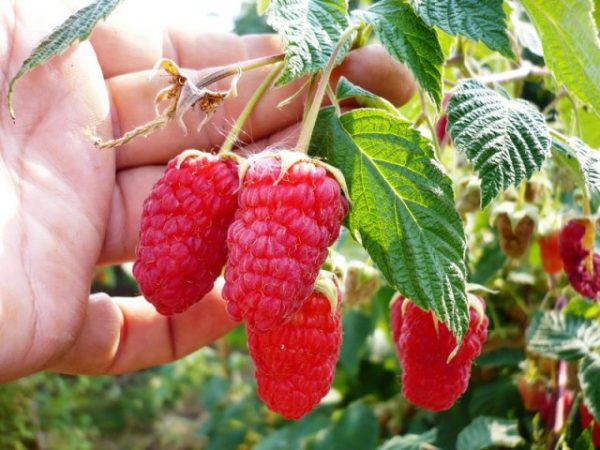
Features varieties of raspberry "Bryansk miracle"
- Since the raspberry has long shoots from the side, it is planted, keeping a distance of 1.7 m, and always tied to a trellis.
- If you have berries rather rounded than conical, then this re-grading.
-
Raspberries of this variety can not tolerate the lack of watering. In hot weather, the berry does not bake, but becomes smaller. Therefore, when the heat is used drip irrigation.
- It is best to plant the Bryansk Miracle raspberry variety in the fall.
- It is advised to break off the twigs with buds that are located near the surface of the soil.
Diseases and pests
White leaf spot
When it appears on raspberry, rounded light brown spots appear, then they become light with a brown border. For treatment, after collecting the fruit, the bushes are sprayed, dissolving 40 g of colloidal sulfur in a bucket of water. The rate of irrigation solution - 0.2 l per 1 m2.
Purple Leaf Spot
Purple spots form on the branches and leaves, which then turn brown. Sick bush does not give berries. To cure raspberries, it is necessary to spray bushes with 1% Bordeaux liquid before the growing season begins or after picking berries.
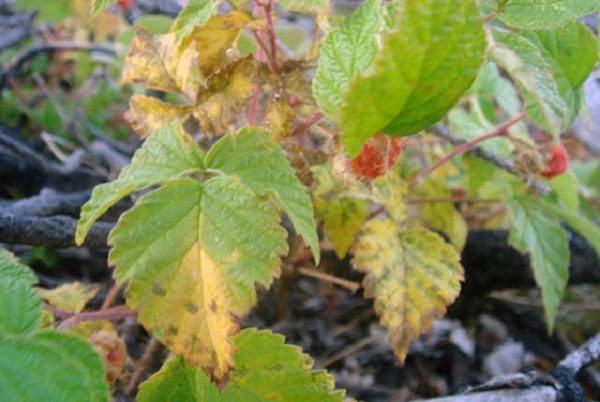
Gray rot
A grayish patina is visible on the leaves, grayish hairs on the fruits, berries smell unpleasant. In early spring, the bushes and the ground beneath them are processed, dissolving 40 g of the drug Hom in a bucket of water, 1 bucket is enough for a hundred.
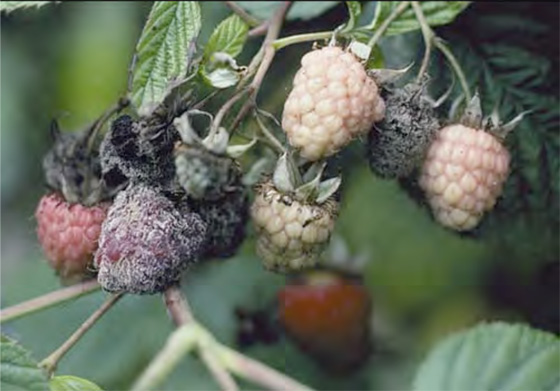
Rust
On the leaves are visible orange tubercles, within them there are disputes. Diseased branches wither. When rust appears in the spring, the plant is sprayed, spreading 200 g of Nitrafen in a bucket of water. After harvesting, the solution is treated with a dilution of 2 tablets of Oxyhoma in a bucket of water.
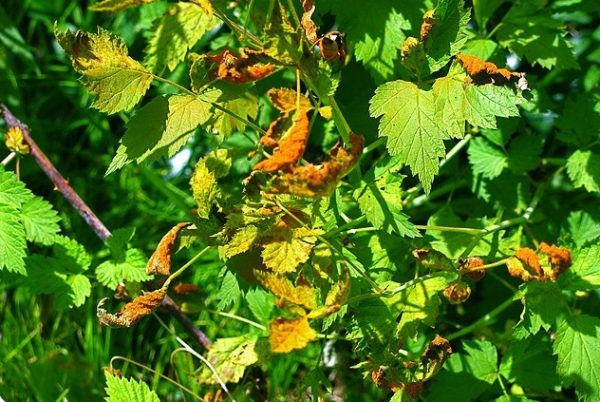
Curly
When it leaves curled inside, raspberry stops giving berries.
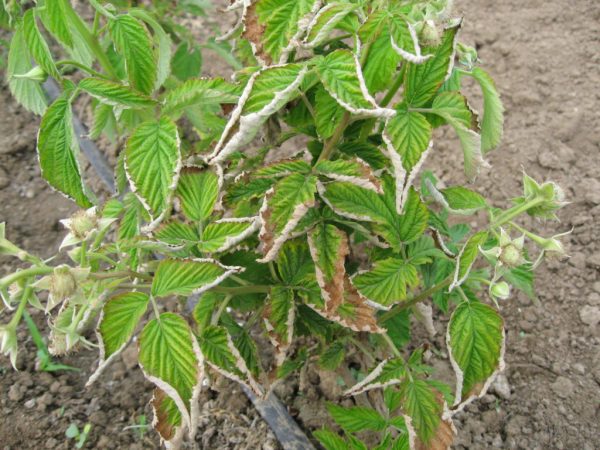
Mosaic
When it leaves on the leaves are visible cream or light green spots, the berries stop tying.
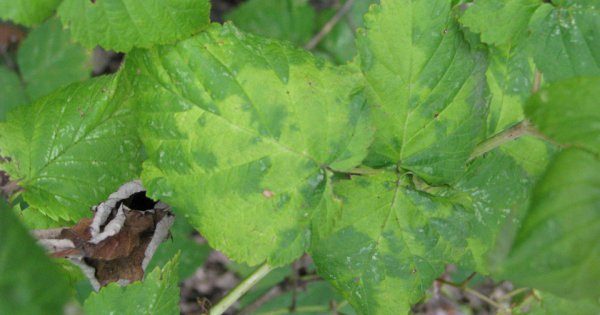
Sprouting
First, a large number of thin small shoots grow on the roots, then the fruits of the raspberries stop growing.
Curly, mosaic and growth cannot be cured, you can only dig up the sick bushes and burn them.
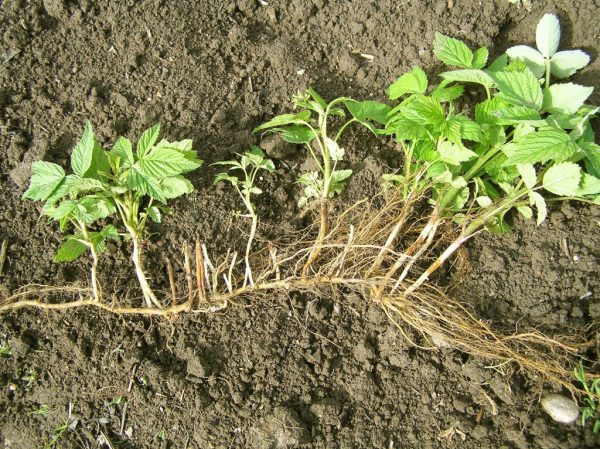
Weevils
Weevils lay eggs in the buds, after whitish larvae crawl out of them.
To eliminate the pest before the blooming of flower buds, spray the plant, making a solution of 1 Spark tablet into a bucket of water. After harvesting, you can sprinkle raspberry 0.2% Carbofos.
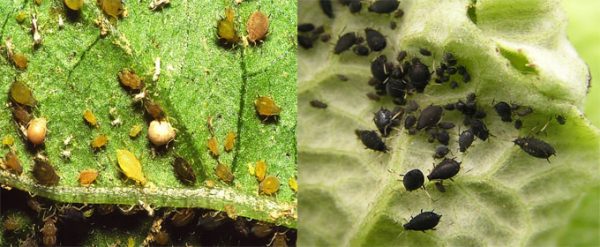
Raspberry beetles
Beetles eat leaves and stems. To fight the raspberry beetles, it is necessary to spray the bushes with Confidor solution before flowering, adding 1 ml of solution to a bucket of water.

Galliches
With the defeat of gall midge under the bark of the stems live orangish larvae that eat the plant. To fight the gallfly, the bushes and the ground around them are sprayed by Aktellik.
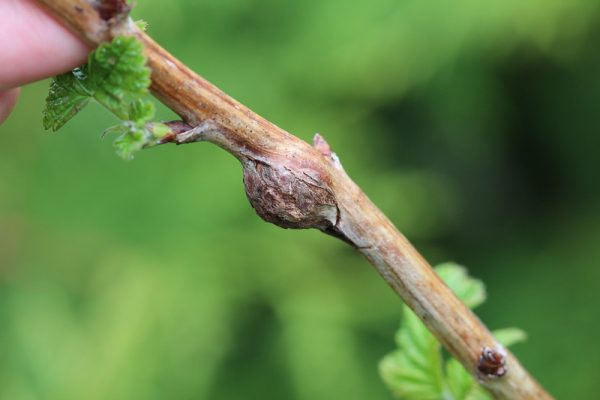
Stem Flies
Flies lay their eggs in the shoots, then the branches dry out.
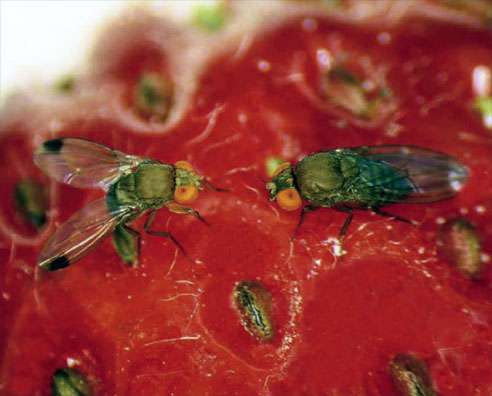
Kidney mole
She eats a kidney.
For the elimination of stem flies and bud moths before flowering of raspberries, it is treated with a 0.3% solution of Karbofos.
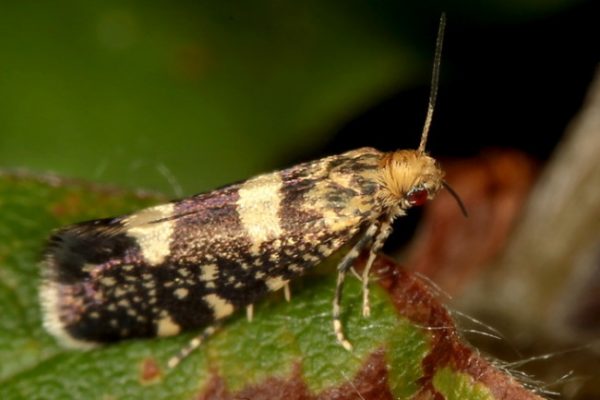
For prevention, burn the leaves in the fall, dig the earth by 15 cm in the fall and spring. Do not forget to pull out weeds and rust the ground 5-6 times in a season 5-6 times.
If you plant the Bryansk Miracle raspberry on your plot, you will be able to feast on delicious berries until frost. In addition, the variety is very high-yielding, since up to 4 kg of fruits are harvested from the bush.
